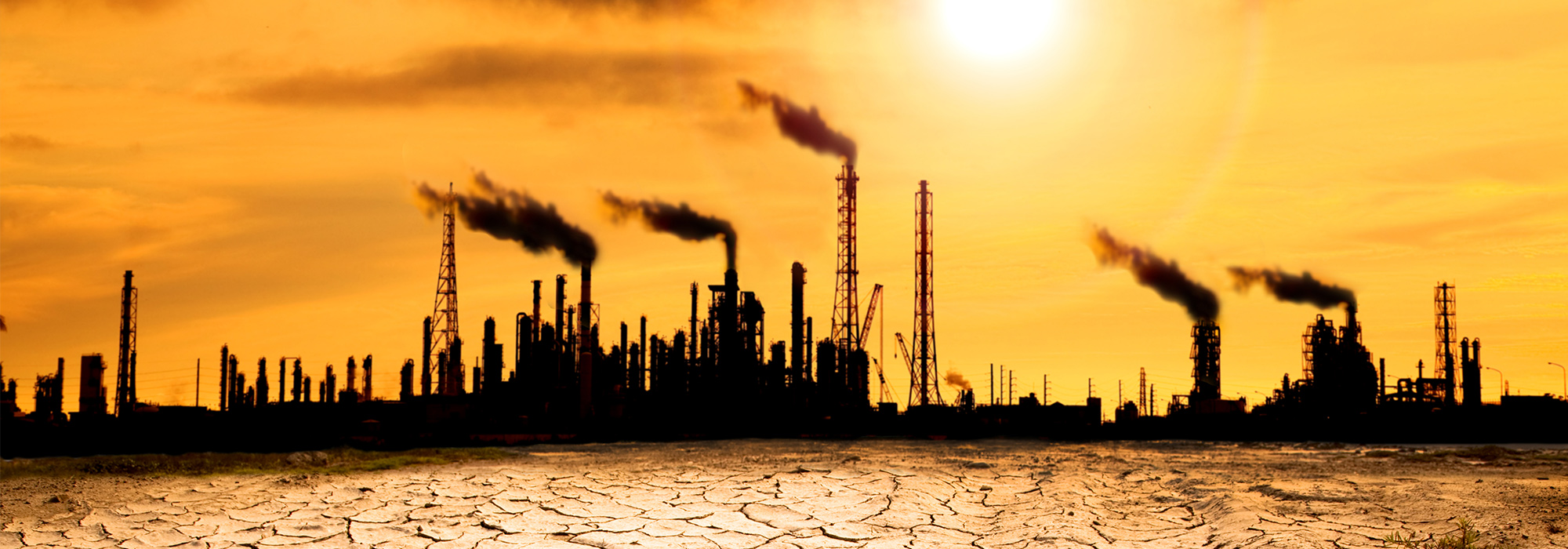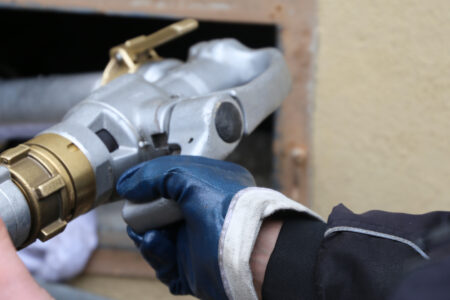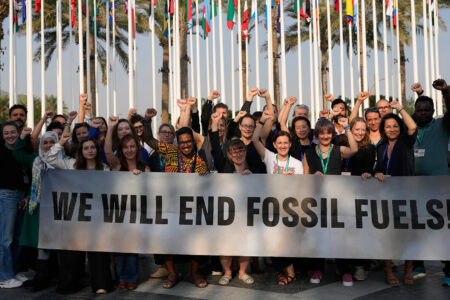
Canada’s long, cold winter and cool summer has caused some of us to wonder whether concerns over climate change are overblown. As a Canadian newspaper columnist recently asked, “So where’s that global cooling alert?” But a discussion of the weather should not be confused with climate change. And the summer of 2009 notwithstanding, long-term data on global temperatures do demonstrate a consistent upward trend.
For many in Canada’s oil and gas industry, the debate is over. Major industry associations such as the Canadian Association of Petroleum Producers and the Canadian Energy Pipeline Association agree that climate change must be addressed and advocate a made-in-Canada solution that strikes a balance between environmental goals and economic necessity. Working as they do in a heavily regulated industry, senior energy executives understand that climate change policy will ultimately be decided by federal and provincial governments, guided by public opinion. For the energy industry, it is a choice between being part of the problem or part of the solution.
The energy industry also recognizes the challenge of meeting the world’s growing need for energy. According to the US Government’s Energy Information Administration (EIA), total world consumption of energy will increase by 44 percent between 2006 and 2030, with the heaviest demand coming from non-OECD countries. According to EIA projections, the current economic downturn is causing only a short-term drop in demand, and the growth trend will resume within one to two years.
In short, fossil fuels will be around for the foreseeable future. This reality puts Canada in the spotlight, given our wealth of energy resources. We have the second largest proven oil reserves in the world after Saudi Arabia. The next eight countries in order of reserve magnitude are Iran, Iraq, Kuwait, Abu Dhabi, Venezuela, Russia, Libya and Nigeria. Given the tensions and security issues that define the current geopolitical landscape, this “top 10” list underscores Canada’s position as a leading source of secure and reliable energy for its international customers.
The focus for Canada’s energy industry today is on how to meet this growing demand while substantially reducing greenhouse gas (GHG) emissions. Carbon capture and storage, or CCS, is now viewed as a key solution to this conundrum.
Before we look more closely at how GHG reduction is being achieved through CCS and other clean energy technologies, let’s spend a moment examining Canada’s emissions record.
Canada emits 2 percent of the world’s energy-related GHGs. Our oil sands industry accounts for about 5 percent of Canada’s total GHG emissions, or 0.1 percent of total global emissions. By comparison, the United States contributes 22 percent of global energy-related GHGs and China emits 20 percent.
The Canadian government has set a target to reduce our total GHG emissions by 20 percent from 2006 levels by 2020 (Canada emitted 721 million tonnes of GHGs in 2006). Can CCS help us achieve this target? Yes. Canada has the potential to reduce CO2 emissions by at least 20 million tonnes per year by 2020, the equivalent of removing four million cars from the road every year.
When President Barack Obama visited Ottawa last February, a significant part of his agenda was to establish the Clean Energy Dialogue, and he gave CCS technology centre stage. This is not surprising: America’s fleet of aging coal-fired power plants, which supply about half the nation’s electricity, are the source of more than 40 percent of its total CO2 emissions, or 1.8 billion tonnes of CO2 per year. Among its many applications, the potential for CCS to reduce GHG emissions rom these plants is an important part of the US administration’s strategy for dealing with climate change.
Canadian governments have also embraced CCS, with project funding commitments of $2 billion from Alberta and $650 million from the federal government. These efforts complement substantial funds that have been allocated to CCS projects by Canadian energy companies.
Monetary support, however, is only part of the impetus required to develop and implement CCS on a broad scale. There needs to be an alignment of Canadian climate change policy and regulation with that of our biggest energy customer and trading partner, the United States.
Alignment is critical for two reasons. First, CCS is expensive and still in the development stage, and companies that are investing heavily in it need assurances that the increased costs will not “price them out of the market” and make it difficult for them to compete with their cross-border peers. Second, Canada is the largest supplier of energy — including oil, natural gas, uranium and electricity — to the United States. It makes sense for us to have common rules and price structures when implementing CCS on a wide scale.
GHGs do not respect international boundaries, and climate change is a global issue. Thus a multilateral framework is the best approach to tackling the problem. The same logic applies to the creation of a market for trading carbon: the more participants, the more efficient the market.
Given the highly integrated nature of our North American energy marketplace, criticism of the federal government for taking a “wait-and-see-what-the-US does” approach to major climate change initiatives is unfair. It would have been pointless and irresponsible for Canada to forge ahead regardless of what emerges from the Obama administration’s efforts to substantially change the course of US energy and climate change policy.
The good news is that policy-makers around the world agree that CCS has potential. On July 9, 2009, the Canadian government announced that Canada will help found the Global Carbon Capture and Storage Institute. Other founding members include Australia, the United States, the United Kingdom, Japan, Norway, China and 13 other nations, along with more than 80 companies and industry associations. It is an important first step in building a global strategy for implementing this promising technology. It is also an opportunity for Canada to demonstrate leadership, given our oil reserves and our status as a major energy exporter.
CCS is a simple solution to reducing GHG emissions. CO2 is captured at the point of release to the atmosphere, typically in a smokestack through the use of scrubbers. The captured CO2 is carried by pipeline to areas where the geology is suitable to allow it to be injected deep underground for permanent storage in saline water reservoirs or depleted oil or gas formations. In the case of some mature oil deposits where the oil has become difficult to access, a process called enhanced oil recovery is used to inject CO2 into the reservoir to allow the oil to move more freely (like adding turpentine to paint). After the oil is extracted, the CO2 remains safely stored deep underground.
Canada’s largest CCS project is at a mature oil field in Weyburn, Saskatchewan, operated by EnCana. More than 13 million tonnes of CO2 have been injected at Weyburn since 2000. Careful monitoring by Canadian and international scientists has detected no leakage or any other adverse effects. Over time, Weyburn is expected to store more than 30 million tonnes of CO2, the equivalent of taking 6.7 million cars off the road for one year.
The CO2 that is injected at Weyburn is piped 330 kilometres from a coal gasification plant in Beulah, North Dakota. This arrangement underscores the argument for a coordinated Canada-US approach to developing and implementing CCS. North Dakota and Saskatchewan are both reducing GHGs through this project: the former by removing it from its plant emissions and the latter by extracting oil that would otherwise remain trapped underground, thereby displacing the need for more carbon-intensive extraction elsewhere. For oil-rich Alberta, the potential for enhanced oil recovery is between 500 million and two billion barrels of conventional oil.
When President Barack Obama visited Ottawa last February, a significant part of his agenda was to establish the Clean Energy Dialogue, and he gave CCS technology centre stage.
Given the enormous environmental benefits of CCS, one might ask why it is not in widespread use today. The main obstacle is the cost associated with current technology. Capturing the CO2 at the source of combustion is the most expensive step, and retrofitting existing facilities to do this is particularly costly. Injection of the CO2 into mature oil deposits costs less, and transporting it by pipeline is the least expensive operation associated with CCS.
Interestingly, the transportation side of CCS also has considerable potential to make this technology more cost-effective. This is because the pipelines that will move CO2 from source to storage site can also carry “hitchhikers”; that is, solids like sulphur, petroleum coke and limestone, which are by-products of oil and gas production. These solids are currently stockpiled at extraction sites. If a CO2 pipeline were located nearby, they could be pulverized, injected into the liquid CO2 and pipelined to markets throughout North America or to western ports for shipment to Pacific Rim customers. With an economical way to transport these products to markets, they could realize attractive prices from end users, offsetting the overall costs of CCS infrastructure.
The monetization of these by-products by transporting them to market alongside CO2 is no mere pipedream. Several interested companies have just recently formed the Carbon Dioxide Slurry Pipeline Consortium to explore the potential of this application.
Most breakthrough technologies are expensive at the beginning of their lifecycles, with costs declining as R&D increases and usage grows.
With CCS, this cycle of research and adoption will likely be accelerated in light of commitments by Canada’s energy industry to improve its environmental performance, strong support from the Alberta and the federal governments, the potential to generate revenues through the innovative approaches described above, and support for CCS as part of the Obama administration’s energy policy.
GHG reductions related to the oil sands will also come from other promising technologies. Before discussing them, we need to look at the rapid evolution of oil sands extraction in the Athabasca region of northern Alberta.
Currently there are two main types of extraction in use: surface (or open pit) and in situ (or “in place”) mining. In situ projects use drilling technology and steam injection or other processes to force up bitumen buried too deep for surface mining. It is estimated that four-fifths of recoverable bitumen in Canada can be accessed only through in situ extraction.
But current in situ operations have their environmental challenges, particularly around the amount of energy required to produce the steam used for extraction and the resulting GHGs emitted.
Toe-to-heel air injection uses combustion rather than steam to liquefy sticky bitumen deep underground at in situ oil sands operations. It uses negligible amounts of fresh water, cuts GHG emissions in half and allows for easier land reclamation. Geothermal energy and petroleum coke gasifiers are also being explored as low-emissions alternatives to natural gas in generating heat and steam for in situ extraction.
Finally, nuclear energy, a proven technology, is being considered as a zero-emission option that would replace natural gas to generate energy and steam for in situ extraction. However, significant hurdles need to be overcome, including the high cost of new nuclear builds, storage issues involving spent fuel, the need to use large amounts of water for cooling at nuclear plant sites, and the fact that it would be difficult to transport steam from the nuclear plant to remote in situ oil sands operations.
Across Canada, progress is being made in a number of areas in reducing emissions. The development, commercialization and application of renewable and alternative energy technologies such as coal-to-gas substitution and fuel cells, conservation and efficiency measures, and new nuclear capacity will all play important roles in helping Canada reach the goal of 20 percent GHG reduction by 2020 set by the federal government. Even eliminating small leaks in equipment (known as fugitive emissions) holds considerable promise in reducing GHGs.
Canada’s energy producers and the federal and provincial governments all agree on the tremendous potential of CCS technology. Given the high cost of bringing it to full commercial scale at oil sands extraction sites, bitumen upgraders, coal-fired power plants and other fossil-fuel-based energy facilities, there will need to be a high level of government-industry collaboration and a proper regulatory framework to turn CCS’s environmental promise into reality.
The Task Force on Carbon Capture and Storage, established in 2007 by Alberta and the federal government, made a number of recommendations in its January 2008 report, entitled “Canada’s Fossil Energy Future: The Way Forward on Carbon Capture and Storage.” The first was for public funding to leverage billions of dollars of industry investment. Fortunately, government has responded, with the previously mentioned $2 billion and $650 million earmarked for CCS development by Alberta and Ottawa, respectively. These funds will be directed at projects that will help demonstrate to industry, government and the public that this technology is safe and effective.
We have to start now with real projects that catalyze the development of responsible regulation, which in turn will assure Canadians that this is a technology that works and is safe. There is a powerful consensus that CCS can play a major role in the battle to prevent climate change. What we need now is a greater sense of urgency in the implementation phase.
One such project is EPCOR’s Genesee power plant, west of Edmonton. A joint project between EPCOR, Enbridge and the Alberta Saline Aquifer Project (ASAP), Genesee would be the first North American project that combines a commercial-scale, near-zero-emission integrated gasification combined cycle (IGCC) thermal power plant with carbon capture, compression and storage. Genesee has the potential to capture more than 3,300 tonnes per day, or 1.2 million tonnes of CO2 emissions a year.
ASAP is an important partner in the Genesee project. A consortium of 38 organizations led by Enbridge, ASAP is an example of the high degree of collaboration among industry, academia and governments in advancing CCS technologies. ASAP has identified several deep saline aquifers in the province that could be used to store CO2. The Genesee project will utilize one of the aquifers that will be owned and operated by the ASAP consortium.
Projects like Genesee and ASAP are critical, not only for demonstrating the feasibility of large-scale CCS facilities, but also for defining the rules and regulations that will govern CO2 storage.
One of the most important issues is the clarification of underground pore space ownership. Another is the need for clearly stated liability obligations for all stages of the CCS process. Still another is the need for written regulations regarding storage site operation, monitoring (to ensure no leakage of CO2 back into the atmosphere occurs), measurement and verification of the amounts that have been captured and stored.
The issue of who will bear responsibility — and liability — for permanent storage sites is critical. No company or shareholder will accept perpetual liability, i.e., liability that continues indefinitely after the end of its operations. Only government can offer the public the confidence of its support for the long-term safety of this important technology.
Since CCS is a new technology, it follows that the regulatory framework for it cannot be built in advance. The acronym for the Alberta Saline Aquifer Project, ASAP, is commonly understood to mean “as soon as possible,” and the choice of this name is no accident. We have to start now with real projects that catalyze the development of responsible regulation, which in turn will assure Canadians that this is a technology that works and is safe. There is a powerful consensus that CCS can play a major role in the battle to prevent climate change. What we need now is a greater sense of urgency in the implementation phase.
While CCS is not a panacea for climate change, its potential is nonetheless real and compelling. Given Canada’s status as a leading energy producer and exporter, CCS can play a significant role in improving this country’s overall environmental performance. The Alberta government estimates that CCS will account for 70 percent of GHG reductions announced in that province’s 2008 Climate Change Strategy.
As the CCS Task Force pointed out two years ago, the technology needs champions at the federal and provincial levels to stimulate funding for early stage CCS projects and to build the regulatory framework described above. The good news is that these Canadian champions are beginning to appear, no doubt encouraged by the prominent role CCS will play in US energy and environment policy.
A strong argument can also be made for US government involvement in early stage CCS projects in the Athabasca oil sands region. As noted in this article, the United States faces serious energy security issues, given the political instability of most of the world’s leading oil reserves countries and the vulnerability of oil supplies to terrorist activities. From this perspective, the cost of developing CCS is far less than, say, the cost of a new aircraft carrier to protect the world’s energy supplies. The Canadian government needs to advocate greater cooperation — including joint investment — with the US to advance CCS technologies and enable the continued development of Canadian oil sands reserves in a manner that is consistent with our mutual environmental standards.
Canada can and should play the lead role in CCS. There are few areas in environmental technology where we have so clear a business case — and a headstart.
We have energy companies firmly committed to improving their environmental performance. We have the expertise (that of my own company included) to transport CO2 over long distances via pipelines. We have the right geological formations and the knowledge required to safely use and permanently store CO2. Finally, we have leadership matched by solid investment in Alberta, the province that produces most of our energy-related GHGs. With these elements all working in our favour, the time for action is now.
Photo: Shutterstock






